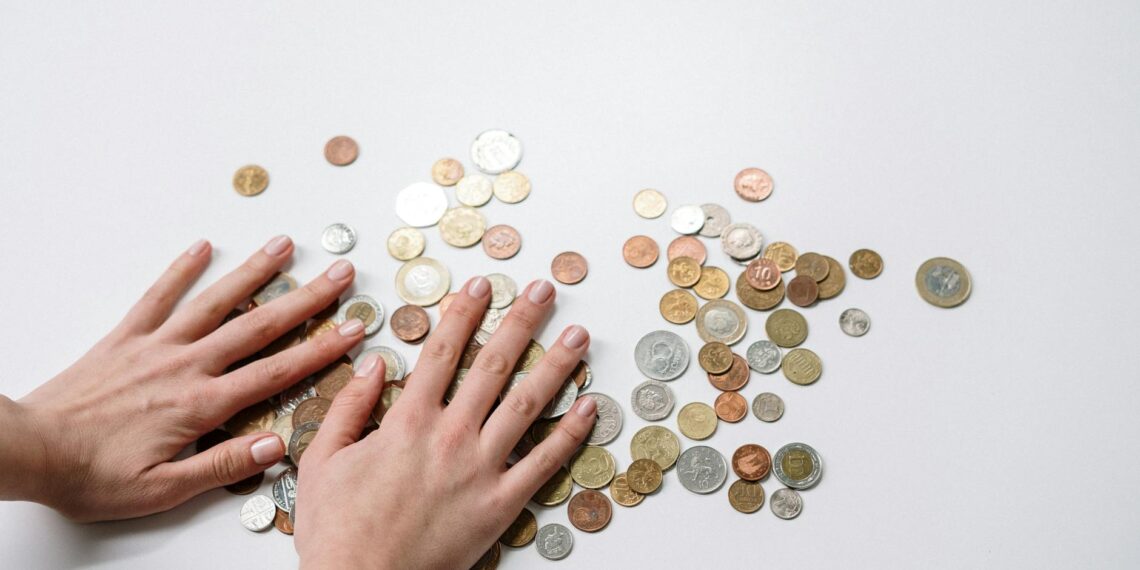Coin errors, imperfections in the minting process, are a fascinating area for collectors. These mistakes can occur at various stages of production and result in unique and sometimes valuable coins.
Here are the main categories of coin errors:
These errors occur during the preparation of the metal blanks (planchets) before striking.
- Wrong Planchet: A coin is struck on a planchet intended for a different denomination or even a different country, according to Error-Ref.com. For instance, a dime struck on a penny blank.
- Off-Metal Errors: The planchet’s composition doesn’t match the standard metal for that coin, states Error-Ref.com. This could include a dime struck on a copper core.
- Improper Alloy Mixture: Uneven layering of metals in the planchet can lead to sections of the coin appearing discolored or with missing layers.
- Imperfect Blank (Clipped Planchet): Pieces of the blank might be missing, creating a crescent shape, straight clip, or ragged clip.
- Lamination: Flaws in the metal can cause layers to separate, leading to peeling or flaking on the coin’s surface.
These involve imperfections in the dies used to stamp the coin’s design.
- Doubled Die: A design element (like a date or lettering) appears doubled or with a shadow-like effect. This is often caused by a defective hub used to create the dies. An example is the famous 1955 doubled die Lincoln cent.
- Die Breaks: Cracks in the die are transferred to the coins, appearing as raised lines. Large die breaks can result in “cuds”, raised areas of metal where a piece of the die has broken away.
- Die Chips: Small pieces of the die break off and create recessed areas on the coin.
- Die Clash: When a planchet is not properly positioned between the dies, the dies can strike each other, leaving traces of the reverse design on the obverse (and vice versa) on subsequent strikes.
- Die Rotation: The obverse and reverse dies are misaligned, causing the design elements to be rotated relative to each other.
- Overpunches: Mint marks or dates are punched over an earlier, incorrect punch, like an overmint mark or overdate.
These occur during the actual striking of the coin.
- Off-Center Strike: The coin is struck off-center, with the design partially shifted off the planchet. This can result in a portion of the blank area being visible on the coin.
- Broadstrike: Similar to an off-center strike, but the strike is relatively centered, with no collar present to constrain the metal, resulting in a larger diameter coin.
- Double Strike: The planchet is struck twice or more by the dies, resulting in multiple images or design elements.
- Die Cap: A coin is repeatedly struck while stuck to one of the dies, causing the metal to flow around the sides and creating a “cap” shape.
- Brockage: A coin is struck against another coin stuck in the collar, creating a mirror image impression on the blank planchet.
- Mule Errors: Two dies intended for different denominations or types of coins are mistakenly paired.
Collecting error coins is a popular hobby. Identifying and valuing them requires a keen eye and knowledge of the minting process and coin varieties. Rare errors in good condition can be quite valuable. However, beware of post-mint damage (PMD) or artificially created fakes, which are not considered true error coins.









What are the different types of error in coins?
Labels used to identify specific categories of errors may describe the cause of the error ( die crack, rotated die, clipped planchet ), the appearance of the coin (wavy steps, trails, missing element) or other factors (mule, cud, brockage).
How to tell if a coin is an error or damaged?
Thanks for asking. Check for doubling, misalignment, or missing details. Edges: Inspect the edges of the coin. Mint errors may have irregularities or inconsistencies, while post-mint damage usually appears more uniform. Striking Errors: Look for coins with features like a double image or parts of the design that are missing.
What is a broadstrike error?
Broadstrike. Coin struck without a collar, thus when the coin is struck the metal is allowed to expand and increase in diameter. May be centered or uncentered, but must not have any missing lettering or design detail.